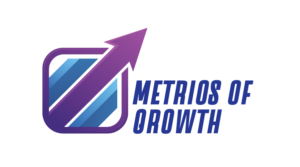In today’s rapidly evolving business environment, leadership is more critical than ever. Executives face mounting pressures to drive performance, navigate uncertainty, inspire teams, and adapt to constant change. To meet these demands, many organizations are turning to executive coaching as a strategic tool for leadership development.
Executive coaching is more than just a professional trend—it’s a powerful, personalized process that helps leaders gain self-awareness, develop skills, and achieve personal and organizational goals. Whether you’re a seasoned CEO or an emerging leader, executive coaching can help you reach your full potential.
What Is Executive Coaching?
Executive coaching is a structured, one-on-one development process in which a trained coach works with a senior leader (executive, manager, or high-potential employee) to improve performance, enhance leadership skills, and support strategic thinking.
Unlike traditional training programs, which are often generic and classroom-based, executive coaching is personalized and goal-oriented. It focuses on the unique challenges and strengths of the individual and often incorporates real-time feedback, assessments, and practical tools.
Sessions are typically confidential and occur over a period of several months, with regular meetings, check-ins, and measurable outcomes.
Key Focus Areas of Executive Coaching
Executive coaching can address a wide range of leadership and personal development topics, including:
- Emotional intelligence
- Strategic thinking and vision
- Communication and influence
- Decision-making under pressure
- Conflict resolution
- Team leadership and motivation
- Time management and delegation
- Work-life balance and resilience
- Executive presence and confidence
Whether a leader is transitioning into a new role, managing organizational change, or preparing for higher responsibilities, coaching provides a safe, supportive space to reflect, grow, and act with intention.
Benefits of Executive Coaching
The impact of executive coaching can be transformational—for both the individual and the organization. Here are some of the key benefits:
1. Improved Leadership Performance
Coaching helps leaders better understand their strengths and weaknesses, sharpen decision-making skills, and lead with greater clarity and confidence.
2. Increased Self-Awareness
Through tools like 360-degree feedback and behavioral assessments, executives gain deeper insight into how they are perceived—and how they can improve.
3. Enhanced Communication
Coaches help leaders develop more effective communication skills, from one-on-one conversations to public speaking, making them more persuasive and approachable.
4. Greater Adaptability
In uncertain times, adaptability is key. Coaching equips leaders with the tools to navigate ambiguity, embrace innovation, and manage change more effectively.
5. Stronger Teams and Culture
When leaders perform at a higher level, it cascades through the organization. Coaching contributes to better team alignment, collaboration, and morale.
6. Higher Retention and Engagement
Investing in leadership development signals that a company values its people. This boosts employee engagement, satisfaction, and loyalty—especially among high-potential talent.
Executive Coaching vs. Mentoring vs. Therapy
It’s important to distinguish executive coaching from similar forms of support:
- Mentoring: A mentor shares their own experience to guide someone’s career development. Coaching, by contrast, is non-directive—the coach asks powerful questions to help the client find their own solutions.
- Therapy: Therapy addresses mental health, emotional healing, or past trauma. Coaching is forward-looking, focusing on goals, behaviors, and performance in a professional context.
While there may be some overlap, executive coaching is typically geared toward achieving measurable professional outcomes.
Who Uses Executive Coaching?
Executive coaching is commonly used by:
- C-suite executives (CEOs, CFOs, COOs)
- Senior managers and directors
- High-potential future leaders
- Newly promoted leaders
- Leaders facing specific performance challenges
- Entrepreneurs and business owners
Both large corporations and small businesses use coaching to build leadership capacity and ensure alignment with business goals.
The Executive Coaching Process
Though each coaching relationship is unique, the process typically follows a structured path:
- Initial Consultation – Define objectives, expectations, and the scope of coaching.
- Assessment Phase – Use of personality assessments, 360-degree feedback, or interviews to identify strengths and areas for development.
- Goal Setting – Collaboratively set SMART goals aligned with both personal and organizational priorities.
- Coaching Sessions – Regular meetings (often bi-weekly or monthly) to explore challenges, reflect, strategize, and track progress.
- Review & Feedback – Periodic reviews of progress, with feedback from stakeholders if applicable.
- Sustainability Planning – Final sessions often focus on sustaining progress and integrating new behaviors long-term.
Choosing the Right Executive Coach
Finding the right coach is crucial to success. Here are factors to consider:
- Credentials & Training: Look for coaches certified by recognized organizations like the International Coach Federation (ICF).
- Experience: A coach with real-world leadership or industry experience may better understand your challenges.
- Coaching Style: Chemistry and compatibility matter. Many coaches offer a complimentary consultation to assess fit.
- References: Testimonials or case studies can provide insight into past results and client satisfaction.
Final Thoughts
In an era of rapid change and increasing complexity, executive coaching has become a cornerstone of effective leadership development. It offers a personalized, strategic approach to growth—helping leaders unlock their potential, navigate challenges, and drive results.
Whether you’re looking to sharpen your skills, prepare for a new role, or lead more effectively, executive coaching can be a catalyst for lasting transformation—for both you and your organization.

